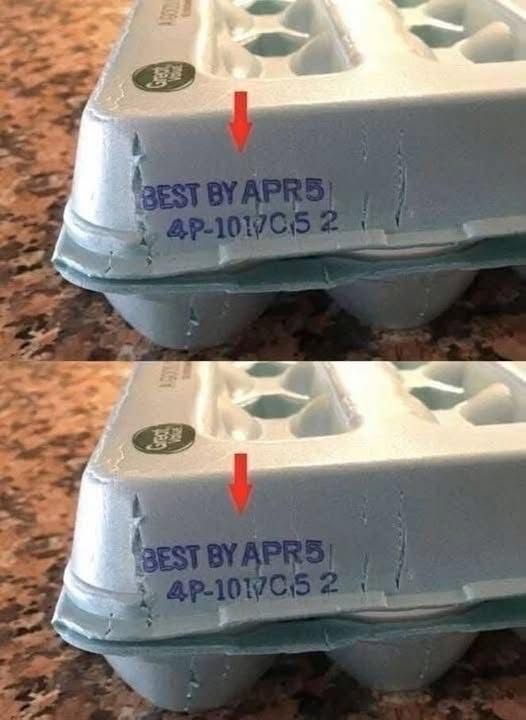
Most of us grab a carton of eggs at the store without a second thought — maybe giving it a quick shake or opening the lid to check for cracks. But there’s an important detail stamped on every carton that goes far beyond a simple expiration date, and knowing how to read it can save you money, reduce food waste, and ensure freshness.
The “Best By” Date Is Not the Same as an Expiration Date
That date printed on your egg carton — for example, “Best By APR 5” — is more of a quality guideline than a hard safety deadline. It tells you when the eggs are at their peak freshness according to the producer. Eggs can still be perfectly safe to eat for weeks after this date, as long as they’ve been stored properly in the refrigerator.
The Real Freshness Code You’re Overlooking
Right under the “Best By” date, you’ll often see a series of numbers and letters (e.g., 4P-1017C5 2). One part of this code — the Julian date — tells you the exact day the eggs were packed. This is a three-digit number ranging from 001 to 365, representing the day of the year (January 1 is 001, December 31 is 365).
- Example: If you see 101, that means the eggs were packed on the 101st day of the year — around April 11th in a non-leap year.
Knowing this can tell you exactly how old the eggs are, no guesswork needed.
Why It Matters
- Fresher Eggs Taste Better – Especially important for recipes like poached eggs or meringues, where texture matters.
- Save Money – You might realize the eggs you’re about to buy are already several weeks old, and opt for a fresher carton.
- Reduce Waste – If you understand that eggs are still safe past the “Best By” date, you’re less likely to throw away perfectly good food.
How to Test Egg Freshness at Home
Even if your eggs are past the “Best By” date, you can check them with a simple water test:
- Fill a bowl with cold water.
- Place the egg gently in the water.
- Fresh eggs sink and lie flat.
- Older but still safe eggs stand upright on the bottom.
- Bad eggs float — time to throw them out.
Bottom Line
The “Best By” date isn’t a strict expiration date — it’s a freshness guide. By learning to read the packing code, you can make smarter choices at the store and waste less at home. Next time you’re in the egg aisle, flip that carton over and give those numbers a second look — your breakfast (and wallet) will thank you.